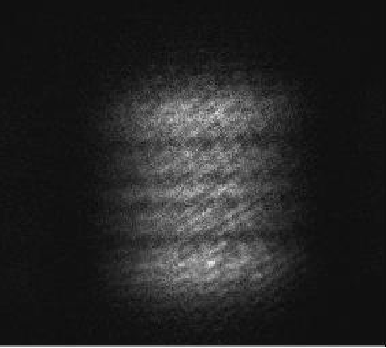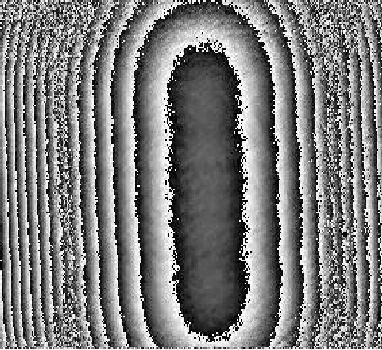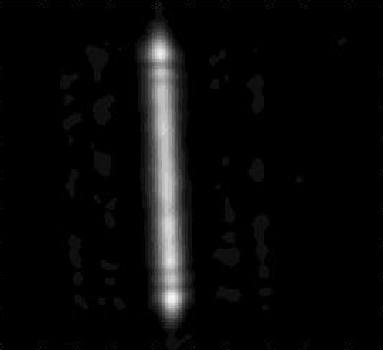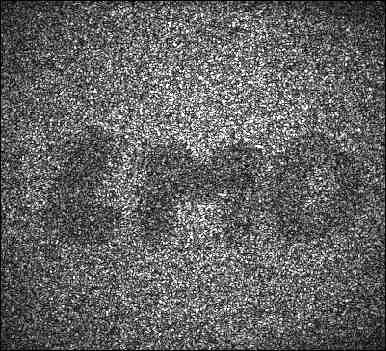Abstract
We use and adapt a new method, developped by Yamaguchi and Zhang [1],
for three-dimensional image reconstruction.
It consists to measure, by phase-shifting interferometry, the distribution of a
complex amplitude at a plane and to compute the Fresnel transformation by a digital computer.
Digital holography is a numerical reconstruction process of the propagated electromagnetic
fields from one plane interferogram ("the hologram"). One of the fields is the "object field".
A CCD camera is used to capture the distribution of interferring object and reference waves.
Here, the method is based on the measurement of the complex wave field on the camera by coding
it with a plane in-axis coherent wave. Fig. 1 shows experimental setup.
 Fig. 1
Picture of the experimental setup.
Fig. 1
Picture of the experimental setup.
Phase stepping techique is used for the determination of the spatial phase of the object wave.
From the Kirchoff-Fresnel equation one calculates the back-propagation of the object wave in
any plane, i.e. in its source plane (the object).
As the object wave is fully determined, modifications of the wave field,
due for example to small deformations of the object, can be observed with high
sensitivity by "numerical" interference.
This is the principle of digital holographic interferometry.
Intensity and Phase map are used to reconstruct numericaly initial object image.
We show at Fig. 2 and Fig. 3 intensity and phase map of a slit detected on a CCD camera
and Fig.4 presents the reconstruted slit image.

Fig. 2 Intensity distribution for the slit,
measured by phase-shifting interferometry.
|
|

Fig. 3 Phase distribution for the slit,
measured by phase-shifting interferometry.
|
 Fig. 4
Intensity distribution for the slit reconstructed by a digital computer.
Fig. 4
Intensity distribution for the slit reconstructed by a digital computer.
For a diffuse object, the same procedure is using.
The intensity image (and phase image) detected by the CCD camera and the image of
the object reconstruted by
the computer
are presented on Fig. 5 and Fig. 6, respectively.

Fig. 5 Intensity distribution of the object,
measured by phase-shifting interferometry.
|
|

Fig. 6 Intensity distribution of the object,
reconstructed by a digital computer.
|
[1] I. Yamaguchi and T. Zhang, Phase-shifting digital holography,
Optics Letters, 22, No 16, 1268-1270, 1997.





